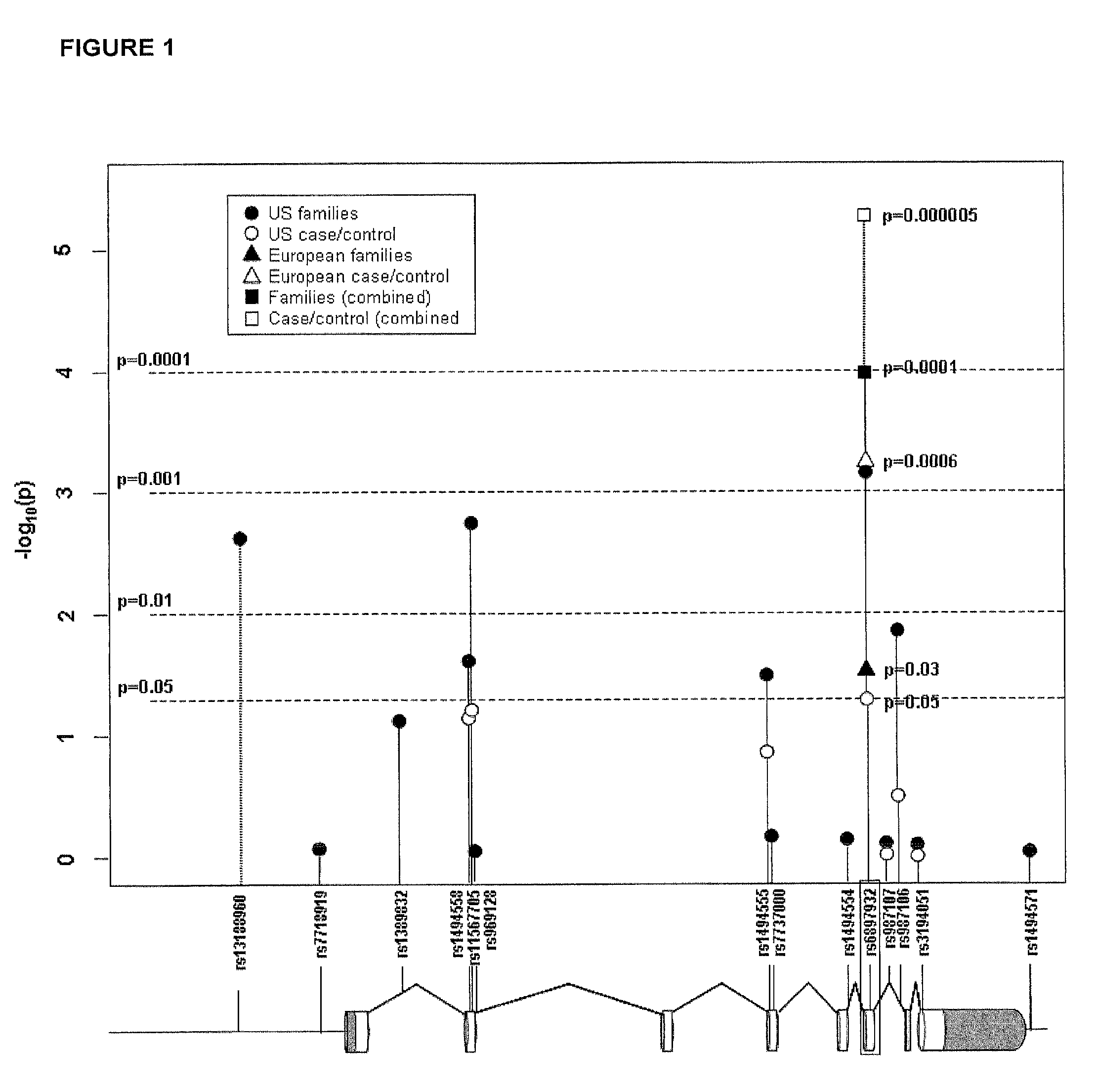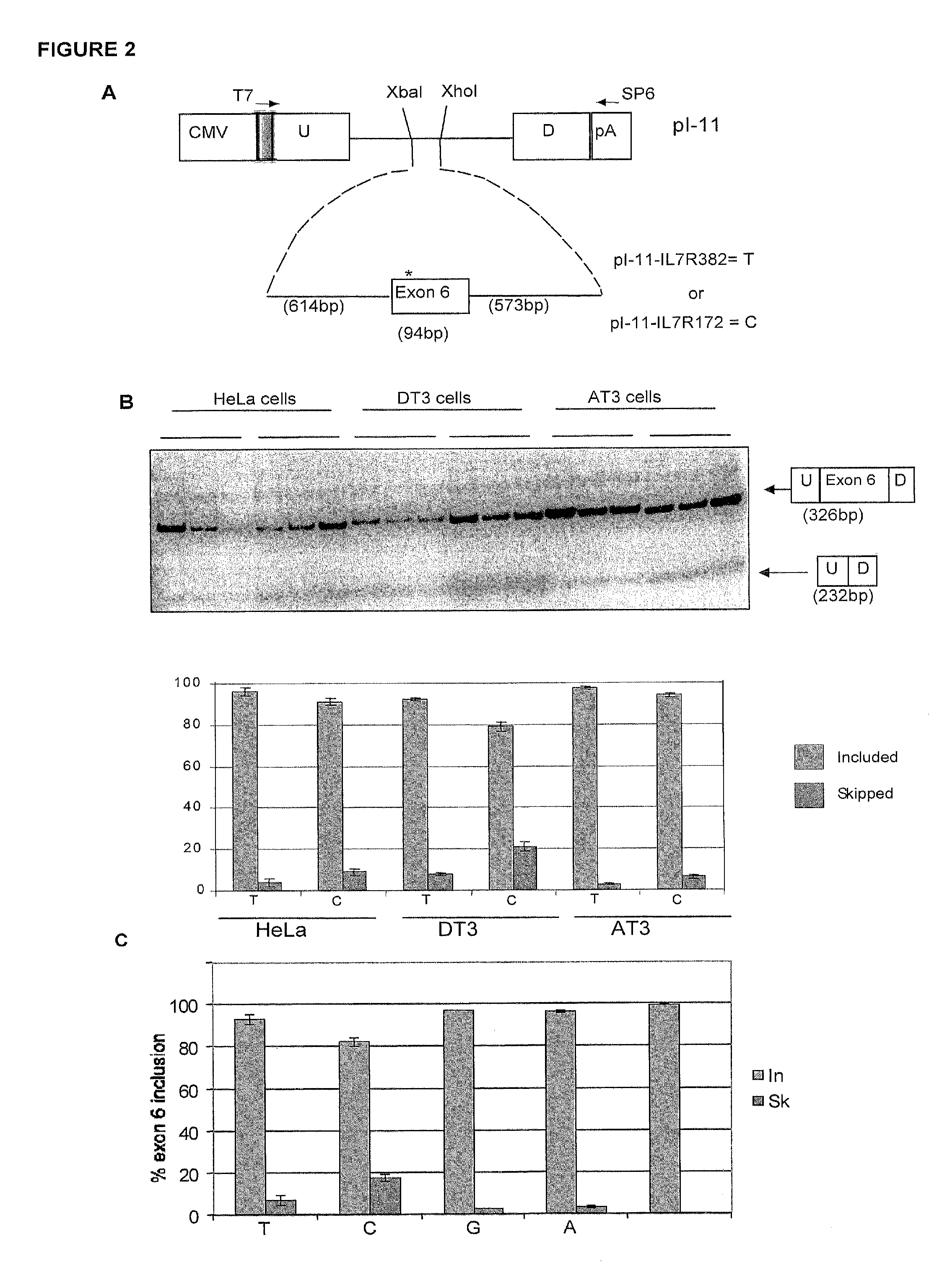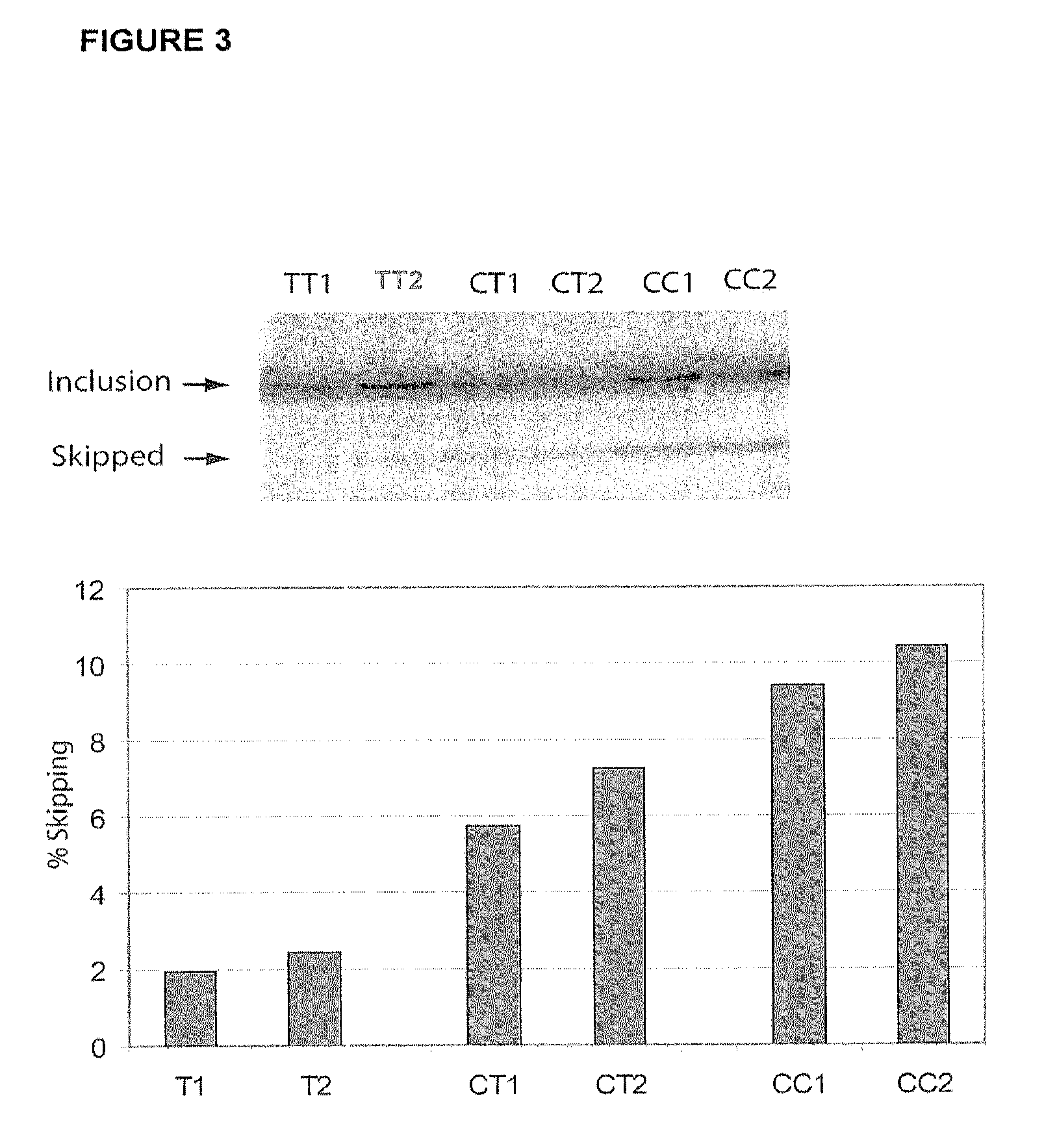Methods and compositions for correlating genetic markers with multiple sclerosis
a technology of multiple sclerosis and genetic markers, applied in the field of identification of genetic markers associated with multiple sclerosis, can solve the problems of inability to consistently identify consensus regions in linkage screens, and hundreds of differentially expressed transcripts identified in gene expression studies with little consistency across studies, so as to reduce increase the skipping of exons, and the effect of potent consequences for the function of receptors
- Summary
- Abstract
- Description
- Claims
- Application Information
AI Technical Summary
Benefits of technology
Problems solved by technology
Method used
Image
Examples
example 1
MS and Control Datasets
[0097]Four large, independent datasets were used in these studies. Individuals with MS could be classified by disease subtype as relapsing-remitting (RRMS), secondary progressive (SPMS), progressive-relapsing (PRMS) or primary progressive (PPMS). A clinical and demographic description of these patients is shown in Table 1 and the datasets are described in detail below.
[0098]The US family dataset consisted of 760 stringently ascertained families of MS patients (563 single-case and 197 multiple-case families), which included 1055 sampled affected individuals (male and female) with MS. All known ancestors were non-Hispanic individuals of European descent. Diagnostic criteria and ascertainment protocols have been summarized elsewhere (e.g., Haines et al. (1996) Nat. Genet. 13:469-471; Barcellos et al. (2004) Ann. Neurol. 55:793-800). All affected family members were examined or had their medical records reviewed. 83% could be classified by disease subtype, as RRMS...
example 2
Statistical Methods
[0101]Statistical methods as described herein were used in data analysis.
[0102]A small number of SNP genotypes causing unresolvable Mendelian inconsistencies, as identified by the PEDCHECK® software program (O'Connell et al. (1998) Am. J. Hum. Genet. 63:259-266), and those implying greater-than-expected recombination rates given the small physical distances between SNPs, as identified by the MERLIN® software program (Abecasis et al. (2002) Nat. Genet. 30:97-101), were eliminated from the analysis. From these data, a residual error rate of <0.3% was estimated.
[0103]All SNPs were tested for Hardy-Weinberg equilibrium (HWE) in separate samples of unrelated affected and unaffected individuals, using an exact test implemented in the GDA® program (Zaykin et al. (1995) Genetica 96:169-178). Measures of linkage disequilibrium (LD) were calculated with the GOLD® software program (Abecasis et al. (2000) BioInformatics 16:182-183).
[0104]To compare the genotyped SNPs to the c...
example 3
Identification of Candidate Genes and SNP Selection
[0110]A list was compiled of 323 genes that were observed to be differentially expressed in nine gene expression analyses (Ramanathan et al., J. Neuroimmunol. 116:213 (2001); Bomprezzi et al., Hum. Mol. Genet. 12:2191 (2003); Matejuk et al., J. Neurosci. Res. 73:667 (2003); Franzen et al., Brain Res. Mol. Brain Res. 115:130 (2003); Mycko et al., Brain 126:1048 (2003); Koike et al., J. Neuroimmunol. 139:109 (2003), Lock et al., Nat. Med. 8:500 (2002), Ibrahim et al., Brain 124:1927 (2001); and Whitney et al., Ann. Neurol. 46:425 (1999)0. Genomic convergence (Hauser et al. (2003) Hum. Mol. Genet. 12:671-677) was used to identify 28 genes that were differentially expressed in at least two of these nine expression analyses. Studies were then focused on three genes used for SNP selection: IL7Rα gene [MIM: 146661]; matrix metalloproteinase 19 (MMP19) [MIM: 601807]; and chemokine (C-C motif) ligand 2 (CCL2) [MIM: 158105].
[0111]SNPselector®...
PUM
| Property | Measurement | Unit |
|---|---|---|
| electrophoresis | aaaaa | aaaaa |
| Disorders | aaaaa | aaaaa |
| temperature | aaaaa | aaaaa |
Abstract
Description
Claims
Application Information
 Login to View More
Login to View More - R&D
- Intellectual Property
- Life Sciences
- Materials
- Tech Scout
- Unparalleled Data Quality
- Higher Quality Content
- 60% Fewer Hallucinations
Browse by: Latest US Patents, China's latest patents, Technical Efficacy Thesaurus, Application Domain, Technology Topic, Popular Technical Reports.
© 2025 PatSnap. All rights reserved.Legal|Privacy policy|Modern Slavery Act Transparency Statement|Sitemap|About US| Contact US: help@patsnap.com



